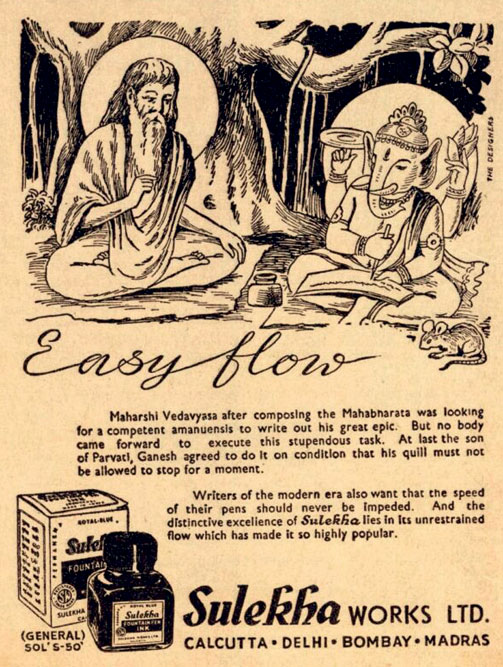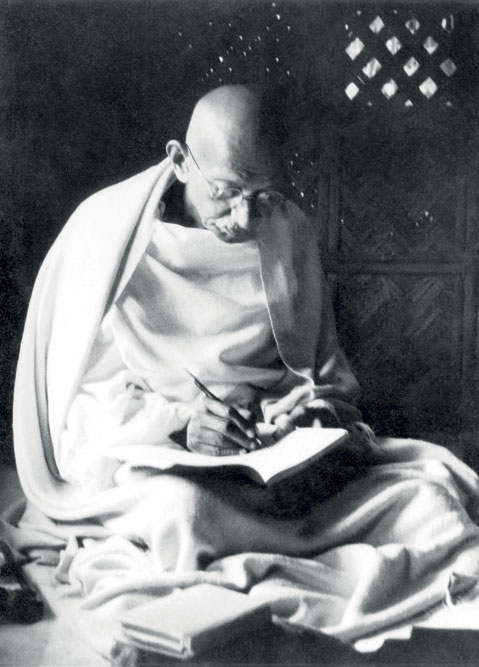Ink of Independence
The brand that freedom fighters loved stages a comeback
 Lhendup G Bhutia
Lhendup G Bhutia
 Lhendup G Bhutia
Lhendup G Bhutia
 |
11 Aug, 2023
|
11 Aug, 2023
/wp-content/uploads/2023/08/Sulekha1.jpg)
Kaushik Maitra, managing director of Sulekha Works (Photos: Subrata Biswas)
IT WAS SOMETIME in the mid 1990s, when Kaushik Maitra, then a 20-something professional who had recently completed his education in electrical engineering in Canada, began to get calls from his grandfather, asking him to return to Kolkata. “He would say, ‘You have to restart the company. You have to come back,’” Maitra recalls.
Maitra’s grandfather Nanigopal was referring to Sulekha Works, the producers of the famous Sulekha ink, which he had established with his brother Sankaracharya in the 1930s, heeding the call by Mahatma Gandhi for developing swadeshi products. Sulekha, which was championed by many leaders of the freedom movement and came to acquire the image of a swadeshi ink, went on to dominate the market after the country’s independence. But in the late 1980s, even as ballpoint and dot pens had begun to emerge and cut into the market share of fountain pens and their ink manufacturers, the trade union issues that were crippling many companies in Kolkata, reached Sulekha too, and the company pulled down its shutters in 1989.
“It was a tough moment for the family. Sulekha meant so much to all of us,” Maitra recounts. So succumbing to his grandfather’s entreaties, Maitra returned. “I started an engineering consultancy firm on the side. And for the next 10 years, I went about trying to reopen the company, going from one court to another, one government department to another. Nobody thought it could be done,” he says. Maitra’s grandfather Nanigopal also died during this period. “Finally all the litigations got settled by 2005, and we got permissions to reopen,” he says.
Sulekha Works reopened in 2007, but this time as a producer of home-care products. Later, it began to also build solar products. Maitra kept manufacturing a little ink too, but this, he admits, was more to keep the memory of the company’s origins and connections with the swadeshi movement alive. The ink market had after all further dwindled. Even the sales of ballpoint and dot pens were coming down, as writing itself was moving online.
“It was what it was,” Maitra says. The market of inks, and even fountain pens, in 1930s India, was mostly dominated by foreign companies. This was a considerable problem. Writing was an integral tool for many of the figures of the freedom movement, whether these were in the form of articles, speeches or letters, especially individuals like Gandhi who were writing constantly (just his letters now archived as the Collected Works of Mahatma Gandhi number in the thousands). And yet while they urged fellow Indians to discard foreign products and adopt swadeshi ones, in the basic act of writing, the swadeshi leaders usually had no recourse but to break their own promise. According to Suvobrata Ganguly, a popular figure in the fountain pen collecting community in India who blogs about fountain pens and their inks in Inked Happiness, Gandhi’s call came during this period. “He was disturbed, because while he had given the call of swadeshi, he had no option but to use foreignmade inks himself,” he says.
We get a hint of the anguish this might have caused followers of the swadeshi movement from a letter Gandhi wrote to the industrialist and supporter Jamnalal Bajaj on 15 December 1932, a period when the swadeshi movement was at its peak. He mentions several things in this letter, including a fascinating account of why he considers bread swadeshi, even when the sugar used to produce the bread’s yeast is of foreign origin. “…it [Sugar] mixes with the other ingredients of yeast and produces a new substance altogether… Three things are used for preparing yeast — mahura, sugar and salt. The mahura is indigenous,” he writes. “According to me, therefore, bread is innocent food even for a person who has taken a vow not to eat foreign sugar.” In this letter, as he details his views on bread, and offers other information such as on his health, and makes some suggestions on the proposed living arrangement for Bajaj’s son Kamalnayan in Pune, he makes a stray mention about a stock of swadeshi ink. “Shri Kateli knew that we had a stock of the swadeshi ink for fountain pens, which you wanted, and, therefore, we have sent a bottle of it for you,” he writes. “We have quite a large quantity of it.” We do not know where exactly this stock of swadeshi ink came from. It could have very well have been what Gandhi used to refer to as inks made in villages. Or it could have been the first Indian inks that nationalists were beginning to prepare.
When writing, Gandhi’s instrument of choice wasn’t the fountain pen, which he railed against for being foreign-made and expensive. He preferred the simple reed pen, and when he used fountain pens, his letters document, he did so with great reluctance. But in the 1930s, Indianmade fountain pens were emerging, for instance the so-called Ratnam pen, made by KV Ratnam in Chennai. And in the east, in a house in present-day Bangladesh’s Rajshahi, upon the instructions of Gandhi, Nanigopal and his brother Sankaracharya were developing a new commercial ink. “After my grandfather came out of jail in the early 1930s [arrested for his participation in the Satyagraha movement], Satish Chandra Dasgupta [a freedom fighter and a chief chemist at Bengal Chemicals] got him to meet Gandhiji. And Gandhiji told my grandfather that he needs educated people like him to get involved in the freedom struggle not by participating in the satyagraha and non-cooperation movements and getting arrested, but by manufacturing swadeshi products for the country,” Maitra says.

What Gandhi and Dasgupta had more specifically in mind, Maitra says, was the production of a domestically produced ink. Dasgupta had already developed an ink of his own, called Krishna Dhara, in the past. But this wasn’t a perfect product. And the Maitra brothers now began to work upon this formula, and raising capital from their father’s savings and by selling their mother’s jewellery, the brothers began first producing the ink from their home in Rajshahi, before formally starting a factory for this purpose in 1934. “Right from the start there was a big demand for it,” says Maitra. “My grandfather was very involved with the whole idea of nonviolence and the freedom movement from his teens. He wrote his exams for his Master’s degree in physics from Calcutta University from jail. He wrote his paper using a pencil, refusing to use a pen with foreign-made ink. And so despite securing the highest marks in the exams, his marks were deducted for using a pencil, and he got the second rank.”
Sulekha however wasn’t the first indigenously produced ink. A 1953 article in the Economic and Political Weekly that surveyed the fountain pen ink industry during that period mentions that the first recorded factory to produce such an ink on a commercial scale in India was Krishnaveni Inks in Madras in 1920. The article states that in the next few years, more domestically produced inks emerged. In Mumbai, there was also the Horse brand of ink powders, later renamed more famously as Camel and also Camlin, that the firm Dandekar and Company established in around 1930. The firm’s founder, a chemistry graduate named Digambar Parashuram Dandekar, is believed to have come up with the name Camel at an Irani Cafe when he saw a poster of Camel cigarettes, and felt the image of a camel, a tough and hardy animal, would make for a better name than a horse. ‘Camel ink’ then some years later got fused together as ‘Camlin’.
What Mahatma Gandhi and Satish Chandra Dasgupta had in mind was the production of a domestically produced ink. Dasgupta had already developed an ink of his own, called Krishna Dhara, in the past. But this wasn’t a perfect product. And the Maitra brothers now began to work upon this formula
Despite their swadeshi tag, competing against foreign ink brands, which were being produced on an industrial scale and were hence cheaper, would not have been easy. These domestic inks however got a fillip when World War II broke out and disrupted, among other things, the supply of imported ink. “A few more units… [came] into production in the following years [after the establishment of Krishnaveni Inks in 1920] in different parts of the country; but real progress was made during the war when the entire demand in the country for ink, both civil and military, was met by domestic production,” the 1953 article in the Economic and Political Weekly states. By 1949 there were 77 units manufacturing fountain pen ink in the country, a majority of them small units. By 1953, a speech from BV Narayanaswamy Naidu, a member of the Tariff Commission, said the number of units now in production had increased to 103.The article also bemoans the presence of two foreign companies, the Japanese Pilot and the American Parker, that despite the protection granted to domestic producers, had set up manufacturing units here.
Sulekha was among the largest of these ink companies. A few years after it began operations in Rajshahi, it shifted its factory to Calcutta, first in Bowbazar, before relocating to where it stands today in Jadavpur. “We had three factories, two in and around Kolkata and one in Uttar Pradesh. Before we shut down, we were producing between three to four crore bottles of ink annually, with a turnover of around Rs4 to 5 crore,” It also won an international bidding process to set up an ink factory in Kenya, where it established and ran an ink factory for some time, before handing it over to a local company.
“My grandfather did not run the company like a business. It was never business for him,” Maitra says. “For him, it was a means for helping someone else, give someone needy a job, for instance.” In the mid 1940s, Maitra says, jobs were provided to people fleeing then East Pakistan, and later again, when people were fleeing persecution in that region in the 1970s. “People used to say, go to Sulekha and get a job. We probably needed a hundredodd people in the workforce. But we had between 800 to 900 people directly employed, and more than a lakh indirectly through ancillary functions,” he says.
The other ink brand that survived from the pre-Independence era, Camlin, diversified into other products—most famously their art products, which at one point was something of a staple in the school bag of Indian children. But the company suffered big losses in later years, and in 2012 was acquired by the Japanese stationery giant Kokuyo.
WHEN MAITRA REOPENED Sulekha Works in 2007, he had not much hope for its ink division. They produced a little ink annually almost for sentimental reasons. But when the pandemic struck, Maitra began to get a flurry of unusual responses. “I used to be in my factory back then, and like many factories during the lockdown, we were producing hand-sanitisers and masks. And suddenly I was getting all these calls and messages asking for Sulekha ink,” he says.

During Covid, as Maitra sees it, several individuals began to seek the familiar comforts of a not too distant past, such as the use of fountain pens and filling them with the once familiar Sulekha. There is also, he says, a growing awareness around the environmental impact of use-and-throw dot and ballpoint pens.
Goaded by the likes of Ganguly and other fountain pen enthusiasts, Maitra began to focus on ink production again. Sulekha Works began to produce more inks, in different series and newer colours, and to Maitra’s surprise, he found them disappearing off the shelves rapidly. They also began to double down on their efforts by doing promotional events around the ink, and promoting it online and in schools and government offices. Their ink division has gone from doing a business which was worth about a few lakh rupees annually two years ago, to one that sells ink worth about rupees one crore or more cumulatively. “There has been a month on month increase in growth. It was all very surprising,” he says.
During Covid, as Kaushik Maitra sees it, several individuals began to seek the familiar comforts of a not-too-distant past, such as the use of fountain pens and filling them with the once familiar Sulekha. There is also, he says, a growing awareness around the environmental impact of use-and-throw dot and ballpoint pens
For a fountain pen evangelist, as Ganguly describes himself, Sulekha ink is special in many ways. “Firstly, it doesn’t use chemical dyes. Secondly, it uses glass bottles and not plastic bottles, which may be cheaper but also adds to the landfill. Also glass bottles do not affect the quality of the ink inside it like plastic bottles can do,” he says.
Sulekha today pitches itself as an advocate of a new type of swadeshi product, one that is in touch with its Indian heritage and seeks to help create a more sustainable environment. “We are not trying to sell a product,” Maitra says. “We are trying to sell a concept of swadeshi, that brings our kids closer to the stories about our culture and heritage, and which makes them conscious about our environment.”

/wp-content/uploads/2025/01/Cover_Kumbh.jpg)












More Columns
The lament of a blue-suited social media platform Chindu Sreedharan
Pixxel launches India’s first private commercial satellite constellation V Shoba
What does the launch of a new political party with radical background mean for Punjab? Rahul Pandita